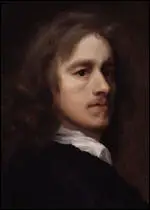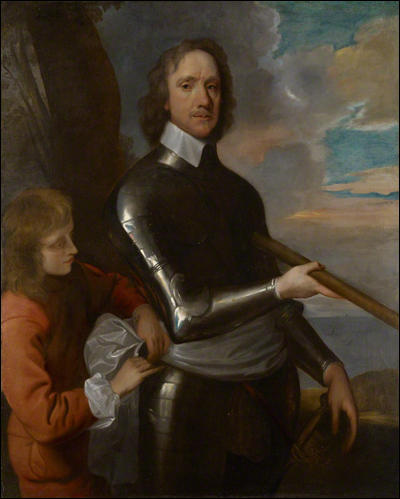Robert Walker

Robert Walker was born in about 1599. Nothing is known of his early life and his first portraits date from the 1630s. It has been suggested that he might have worked as a student of Anthony Van Dyck.
Walker's work has also been compared to that of William Dobson. "Walker's poses are often stiff and his colour schemes limited compared to Van Dyck's. A prolific artist, his style is much more obviously derivative than that of his royalist counterpart William Dobson." (1)
During the English Civil War he painted several members of the New Model Army including Charles Fleetwood, Henry Ireton, Thomas Fairfax and John Lambert. He also painted the writer, John Evelyn, in 1648. Evelyn is shown in a half-length view wearing a white shirt and blue gown, at a table and leaning on a skull.
However, Walker is best known for his portrait of Oliver Cromwell that was produced in 1649. The pose is very similar to the one used by Van Dyck for his paintings of Thomas Wentworth (1639) and Kenelm Digby (1640). "This portrait (of Cromwell) is thought to date from that year and shows Cromwell wearing a type of armour which is unlikely to have been worn in battle but instead designed as a symbol of chivalric virtues. He holds a baton, the symbol of high military command." (2)

© National Portrait Gallery
Art historians have expressed surprise at Cromwell allowing Walker to paint his portrait. It is very different from other portraits painted of Cromwell during this period. Cromwell once told the artist, Peter Lely to "use all your skill to paint my picture truly like me and not flatter me at all. Remark all these roughness, pimples, warts and everything as you see me. Otherwise I’ll never pay a farthing for it." (3)
Samuel Cooper obviously followed the same instructions and it seems that he was responsible for more paintings of Cromwell than any other artist. (4) Cromwell selected artists like Cooper who would present him "plain both in character and in clothing". It has been pointed out that plainness had a political purpose, presenting Cromwell as a "sober, honest alternative to the tradition of royal vanity, excess and arrogance he’d just replaced". (5) Alfred L. Rouse argues that "Cooper rendered the finest portrait of the great man, painted with penetrating sense of character." (6)
Margaret Whinney, the author of English Art, 1625-1714 (1957) has argued that he was "the favourite painter of the Parliamentarian party" but was in fact a poor artist. "In Walker's portraits of the Parliamentarians their heads are attached to bodies lifted straight from Van Dyke... His dry and impersonal use of paint and his lack of any feeling for colour were perhaps well suited to his sitters." (7)
Robert Walker died in 1658.
Primary Sources
(1) Ann Sumner, Robert Walker : Oxford Dictionary of National Biography (2004-2014)
Robert Walker's poses are often stiff and his colour schemes limited compared to Van Dyck's. A prolific artist, his style is much more obviously derivative than that of his royalist counterpart William Dobson. This is evident in, for example, his portrait of Cromwell in the Cromwell Museum, Huntingdon, in which the pose is closely based on that used by Van Dyck in his portrait of Sir Kenelm Digby in armour (NPG). Though his work lacks any of the painterly qualities of Dobson, Walker occasionally demonstrated wit and originality, and his portraits possess a distinctive soft quality that is his own.
Student Activities
Portraits of Oliver Cromwell (Answer Commentary)
